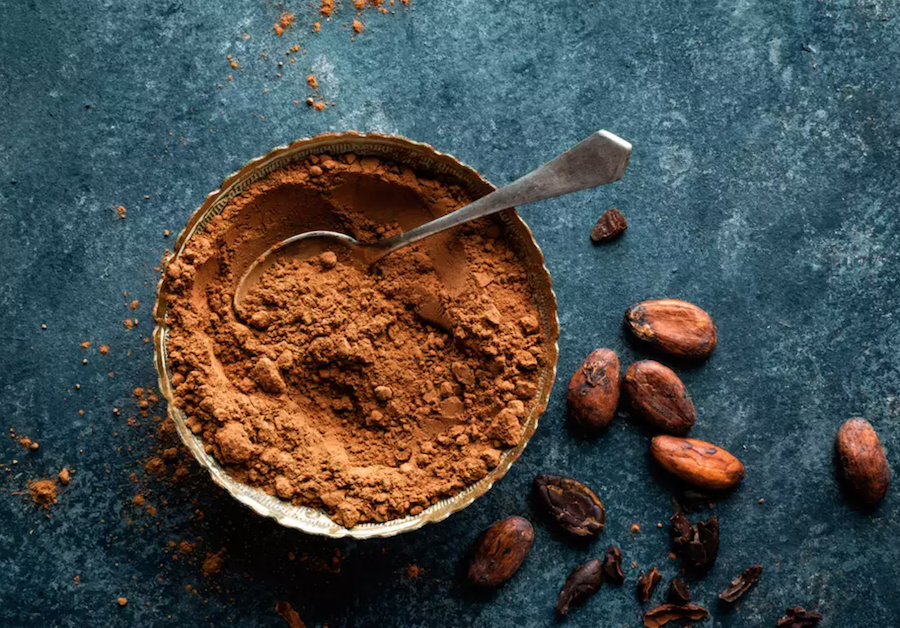Cocoa powder, an unsweetened chocolate product, adds deep chocolate flavor to desserts and beverages. Cocoa powder occurs when the fat, called cocoa butter, gets removed from the cacao beans during processing. The leftover dried solids get ground into the product sold as cocoa powder.
Higher-quality cocoa powder retains slightly more cocoa butter than lesser brands. Cocoa powder is the missing ingredient in so-called “white chocolate,” which is produced by combining cocoa butter and sugar (plus an emulsifier) but no actual cocoa solids.
Varieties
The two basic types of cocoa powder are Dutch process and natural. You’ll find them labeled both ways, in addition to products that say “Dutch and natural blend.”
Pure ground cocoa powder has a pH level between 5.3 and 5.8, putting it on the acidic end of the scale. The acidity affects the flavor, the way it interacts with other ingredients, and its solubility.
Natural cocoa powder produced with the Broma process retains the natural pH level. It tends to be more intensely flavored, and a lighter, almost reddish-brown color. The Dutch process (sometimes called “Dutching”) bathes the cocoa beans in an alkaline solution, producing a darker brown cocoa powder with a chemically neutral pH of between 6.8 and 8.1, resulting in a more mellow flavor. Dutching also reduces the antioxidant properties of cocoa.

